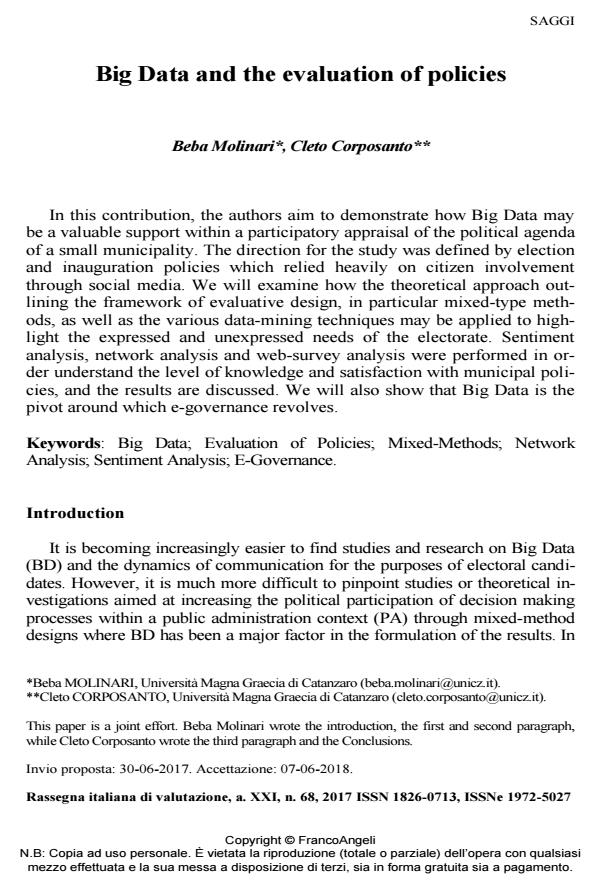Big Data and the evaluation of policies
Titolo Rivista RIV Rassegna Italiana di Valutazione
Autori/Curatori Beba Molinari, Cleto Corposanto
Anno di pubblicazione 2018 Fascicolo 2017/68
Lingua Inglese Numero pagine 19 P. 84-102 Dimensione file 515 KB
DOI 10.3280/RIV2017-068006
Il DOI è il codice a barre della proprietà intellettuale: per saperne di più
clicca qui
Qui sotto puoi vedere in anteprima la prima pagina di questo articolo.
Se questo articolo ti interessa, lo puoi acquistare (e scaricare in formato pdf) seguendo le facili indicazioni per acquistare il download credit. Acquista Download Credits per scaricare questo Articolo in formato PDF

FrancoAngeli è membro della Publishers International Linking Association, Inc (PILA)associazione indipendente e non profit per facilitare (attraverso i servizi tecnologici implementati da CrossRef.org) l’accesso degli studiosi ai contenuti digitali nelle pubblicazioni professionali e scientifiche
In this contribution, the authors aim to demonstrate how Big Data may be a valuable support within a participatory appraisal of the political agenda of a small municipality. The direction for the study was defined by election and inauguration policies which relied heavily on citizen involvement through social media. We will examine how the theoretical approach outlining the framework of evaluative design, in particular mixed-type methods, as well as the various data-mining techniques may be applied to highlight the expressed and unexpressed needs of the electorate. Sentiment analysis, network analysis and web-survey analysis were performed in order understand the level of knowledge and satisfaction with municipal policies, and the results are discussed. We will also show that Big Data is the pivot around which e-governance revolves.
Parole chiave:Big Data; Evaluation of Policies; Mixed-Methods; Network Analysis; Sentiment Analysis; E-Governance.
Beba Molinari, Cleto Corposanto, Big Data and the evaluation of policies in "RIV Rassegna Italiana di Valutazione" 68/2017, pp 84-102, DOI: 10.3280/RIV2017-068006